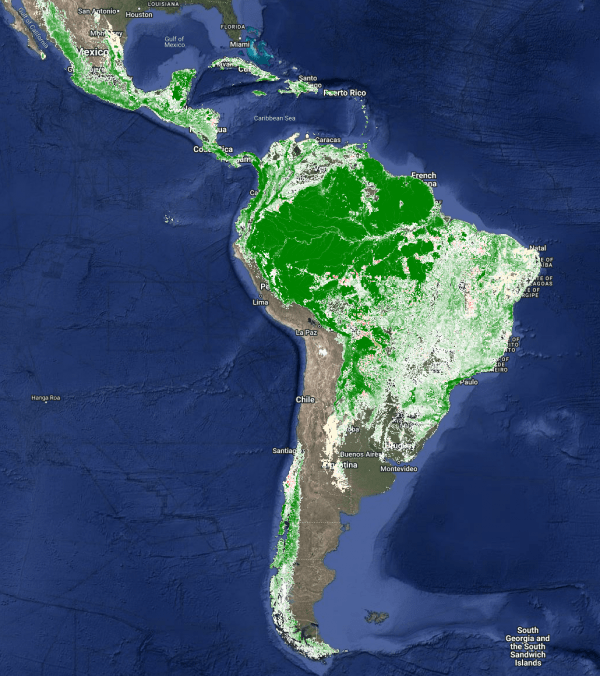Woody Vegetation Dataset for Latin America Released
Annual data from 2015 to 2023 provides detailed insights into tree canopy cover and height.
A team of scientists, led by Research Professor Peter Potapov, has released the Latin America Woody Vegetation Structure and Change (LAM WVSC) dataset, designed to support forest management, conservation and restoration in Latin America. The dataset covers the period from 2015 to 2023 and offers data on woody vegetation structure at a resolution of 30 meters per pixel.
Addressing Data Gaps
Existing land cover maps and forest loss datasets often do not provide detailed information on vegetation structure, such as tree canopy cover and height, especially in savannas and dry woodlands, explained the dataset release.The LAM WVSC dataset addresses this by offering annual data on the structure of forests, woodlands, and savannas. Even short and open woodlands, with a canopy cover of 10% and tree height of 2 m are reflected by this new dataset. The new data will support biomass modeling, greenhouse gas emission estimates and forest restoration planning.
Methodology
The dataset was developed through a collaboration between scientists at Global Land Analysis & Discovery (UMD-GLAD), the World Resources Institute and Brazil’s National Institute for Space Research using these methods:
- Landsat Analysis Ready Data (ARD): Used for accuracy and consistency.
- Annual Phenology and Change Detection Features: Employed to monitor vegetation dynamics.
- Locally Calibrated Regression Tree Ensemble Models: Utilized for detailed structure mapping.
- Temporal Filtering Techniques: Applied to enhance interannual map consistency.
Access and Availability
The dataset is freely available under the Creative Commons Attribution License (CC BY). It can be accessed as raster image tiles or as public assets on Google Earth Engine. An interactive platform for viewing the data is available.
Image: The map shows percent tall woody cover (> 5m tall) in shades of green ((0 to 100%, light to dark green), short woody vegetation cover (<5 m) in white, woody vegetation cover decrease in red, and decrease - in blue. Courtesy of the Global Land Analysis & Discovery (UMD-GLAD) group.
Published on Thu, 01/16/2025 - 15:41


